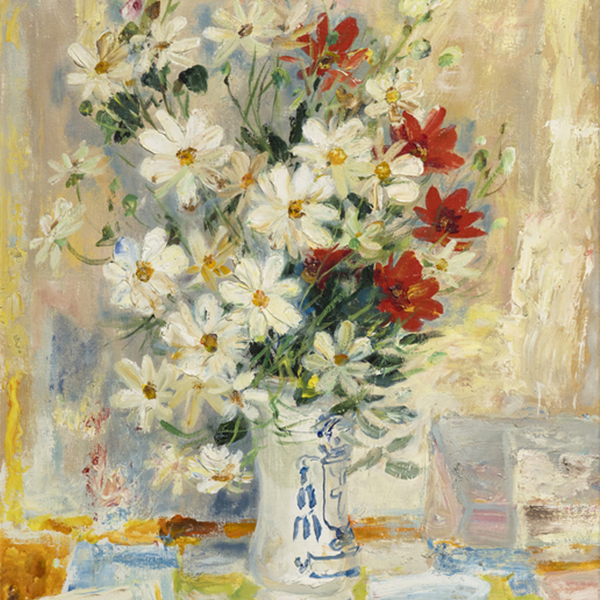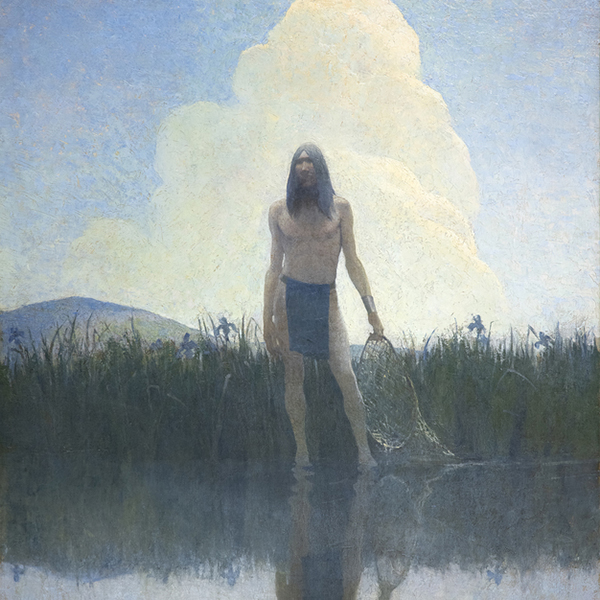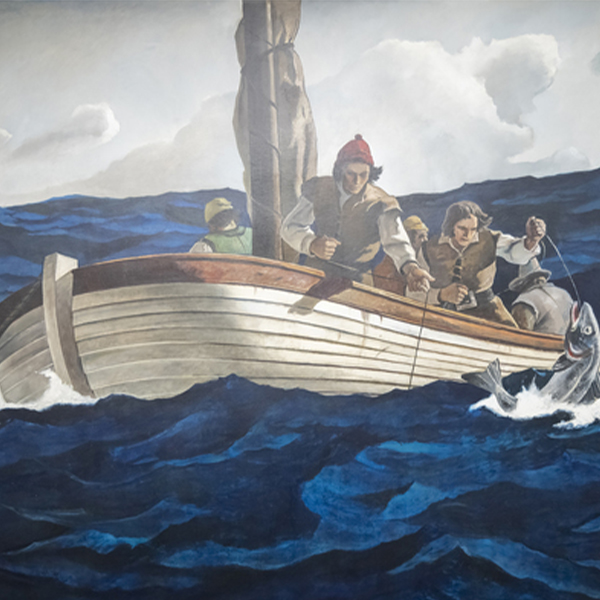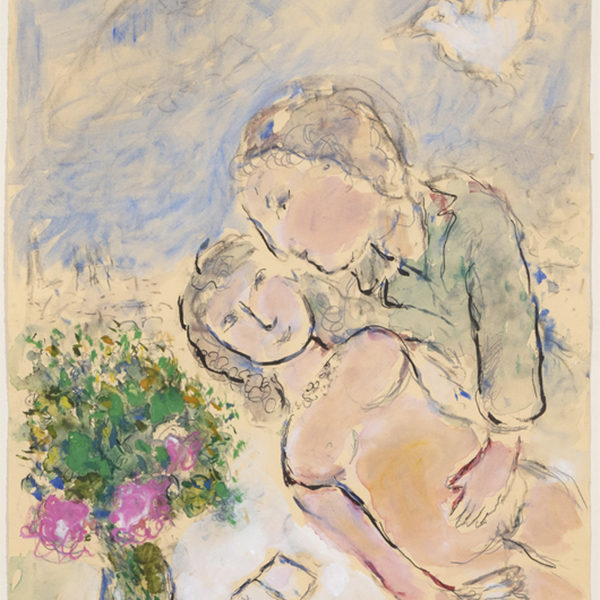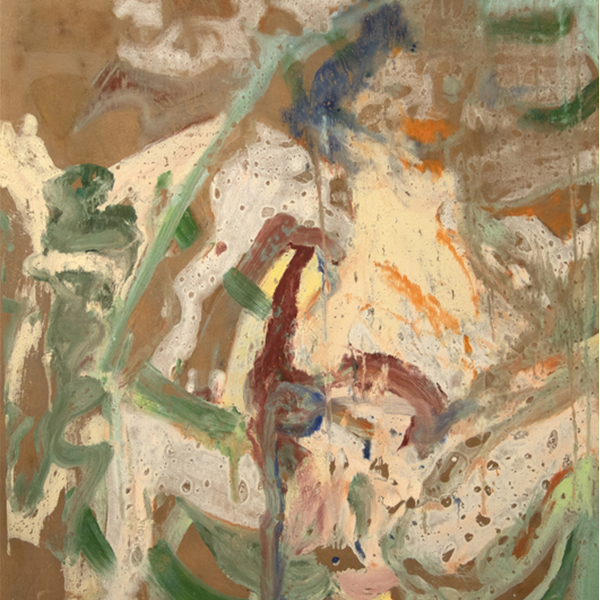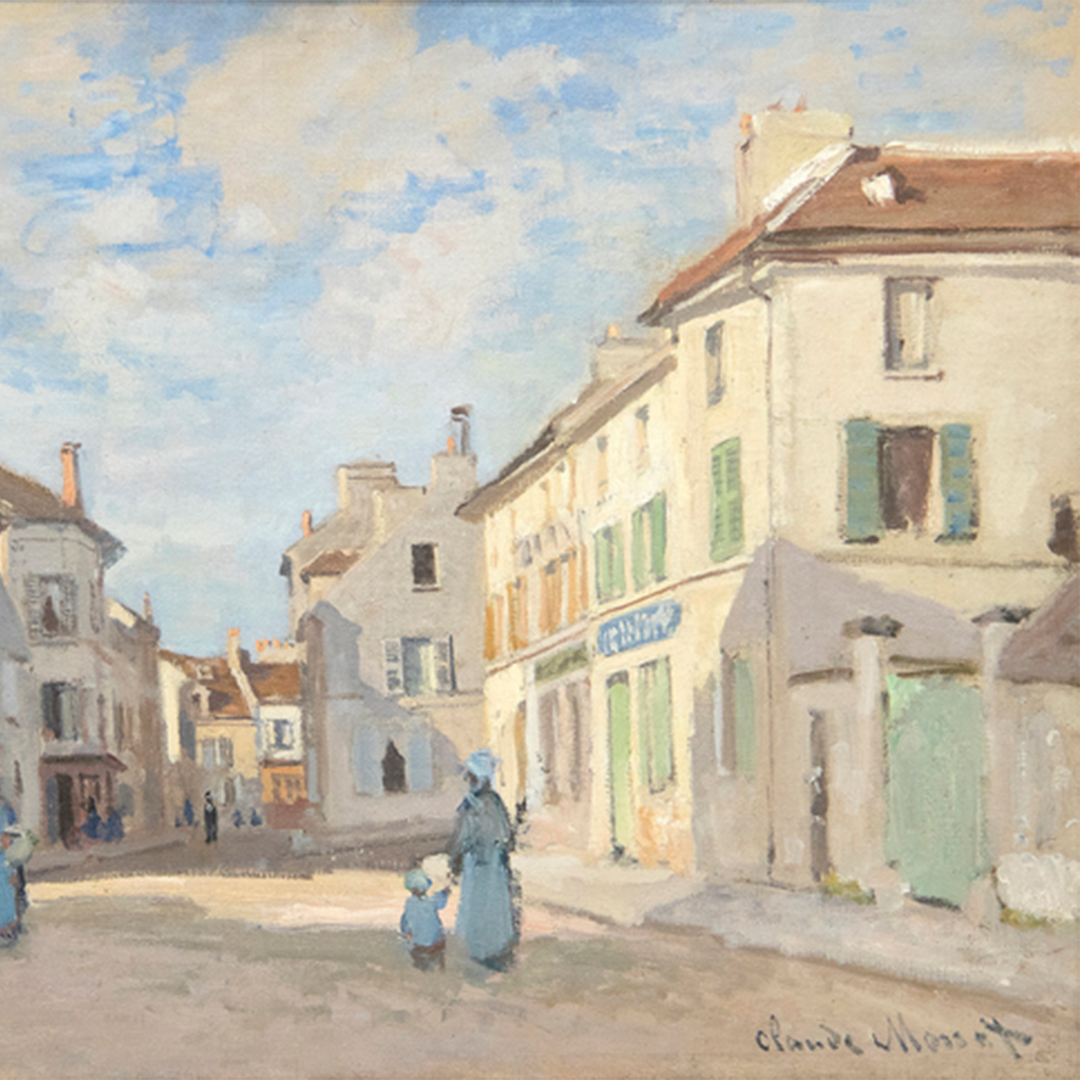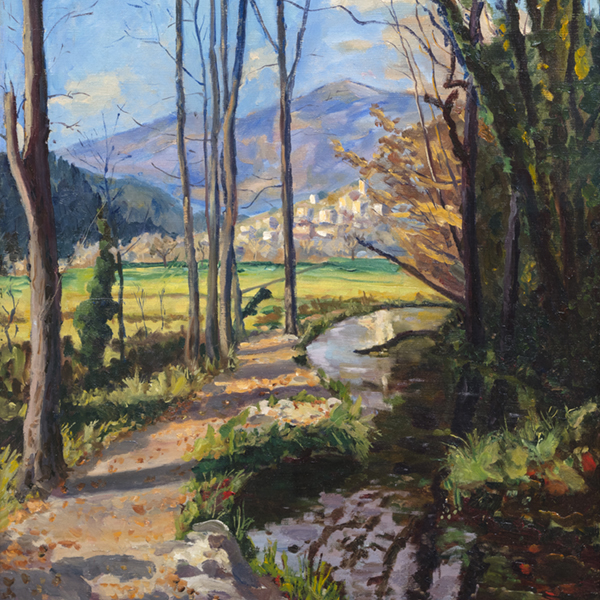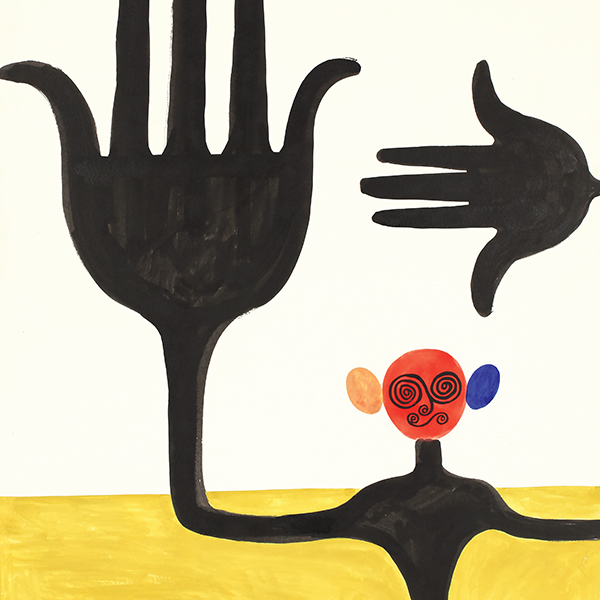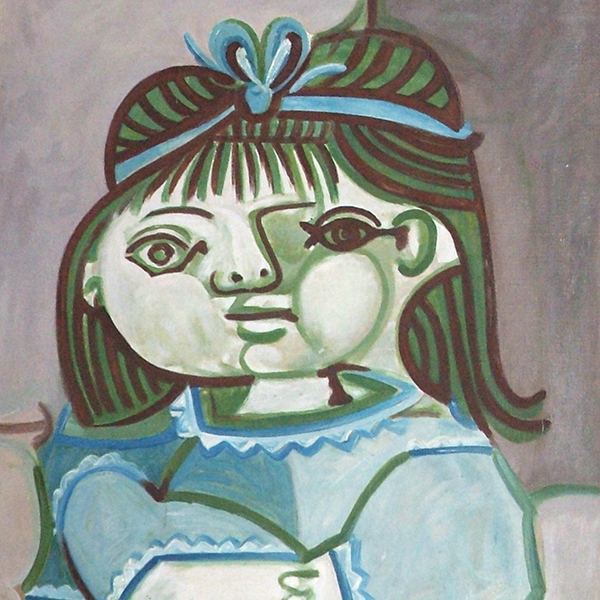Veuillez contacter la galerie pour plus d'informations.
Expositions en cours
2024
2023
2022
2021
2020
2019
2018
2016
2015
2014
2011
2010
2009
DÉTAILS CLÉS
- Cette peinture représente la sœur de Wood, Nan Wood Graham, qui apparaît également dans la peinture la plus célèbre de l'artiste, American Gothic (1930).
- Il s'agit de l'une des peintures les plus importantes de l'œuvre de Wood et, selon le Dr Henry Adams, spécialiste de Grant Wood, il s'agit de "l'une des dernières œuvres majeures de Grant Wood en mains privées".
- Wood a conservé le portrait de Nan dans sa collection personnelle et l'a placé en évidence dans le salon de sa maison d'Iowa City.
- Les peintures de Grant Wood, et en particulier ses portraits, sont incroyablement rares. Seuls deux portraits à l'huile achevés ont été vendus aux enchères et aucun portrait réellement comparable n'a jamais été vendu publiquement.
- Un paysage à l'huile réalisé à peine un an plus tard, Spring Plowing (1932), a été vendu pour 6 960 000 USD en 2005. Il ne fait que la moitié de la taille du Portrait de Nan.
- Ce portrait a fait l'objet de nombreuses expositions, notamment au Whitney Museum of American Art en 2018 : Grant Wood : American Gothic and Other Fables.
RARITÉ
- Après avoir peint American Gothic en 1930, Wood n'a plus peint qu'une poignée d'œuvres chaque année, produisant à peine plus de 30 peintures matures au cours de sa vie, en raison de sa mort prématurée en 1942, à l'âge de 50 ans seulement.
- Les peintures de Grant Wood, et en particulier ses portraits, sont incroyablement rares. Seuls deux portraits à l'huile achevés ont été vendus aux enchères et aucun portrait réellement comparable n'a jamais été vendu publiquement.
- Selon Henry Adams, spécialiste de Grant Wood, il s'agit de "l'une des dernières œuvres majeures de Grant Wood en mains privées".
- À propos de l'œuvre de Grant Wood, le Dr Adams a fait remarquer que "son travail est presque aussi rare que celui de Vermeer".
HISTOIRE
Grant Wood est considéré par de nombreux spécialistes, conservateurs et collectionneurs comme le père du régionalisme américain. Ce style met en scène des scènes et des sujets campagnards et revient à l'art figuratif au moment où le modernisme européen et l'avant-garde parisienne s'imposent. La personne assise dans cette œuvre est la sœur de Wood, Nan, qui a servi de modèle à Wood, apparaissant dans plusieurs œuvres, dont le tableau le plus célèbre de Wood, American Gothicqui fait partie de la collection de l'Art Institute of Chicago.
Peu d'œuvres de Grant Wood d'une telle complexité et d'une telle importance sont apparues en dehors des collections de musées, sans parler de leur mise en vente. Ce portrait est l'une des peintures les plus importantes de l'œuvre de Wood. Henry Adams, éminent spécialiste de Grant Wood, a déclaré que le Portrait de Nan est "l'une des dernières œuvres majeures de Grant Wood en mains privées".
Portrait de Nan est resté dans la collection de l'artiste jusqu'à sa mort et est également le seul tableau qu'il ait conservé - et le seul tableau dans sa maison, ayant été jusqu'à choisir les meubles et le tapis pour compléter le tableau tel qu'il était accroché dans son salon d'Iowa City.
Henry Adams décrit ce tableau comme "un pendant à son tableau le plus célèbre", American Gothic de 1930″. Adams suppose également que Portrait of Nan était destiné à rectifier l'image publique de Nan après American Gothic peint l'année précédente, qui était devenu célèbre et, ce faisant, avait insinué une (fausse) relation extraconjugale entre les deux sujets (Nan et leur dentiste de famille).
Portrait de Nan est le dernier portrait de la première période de l'artiste, le point final de la période au cours de laquelle il a créé Femme aux plantes et American Gothic. Après 1930, l'artiste n'a créé que quelques tableaux par an, ce qui fait des peintures à l'huile achevées, quel que soit le sujet, une véritable rareté.
Le style de ce portrait est une fusion entre le portrait américain contemporain (à l'époque) et celui du XIXe siècle : "le lourd rideau d'encadrement du portrait, l'arrière-plan austère, le format ovale [des portraits privilégiés aux époques coloniale et Victoria] et la chaise de l'époque fédérale évoquent de nombreux éléments formels que l'on retrouve dans la peinture populaire américaine du XIXe siècle".
Les peintures de Grant Wood de cette période ont été influencées par son récent voyage en Europe et l'art de la Renaissance du Nord qu'il y a vu en 1930, lorsqu'il s'est éloigné du style académique/impressionniste de sa jeunesse et a développé son style mature qui célébrait les sujets du Midwest. La présente peinture a fait l'objet de nombreuses expositions, dont une en 2018 au Whitney Museum of American Art, à New York: Grant Wood : American Gothic and Other Fables .
LES MEILLEURS RÉSULTATS AUX VENTES AUX ENCHÈRES
PEINTURES DANS LES COLLECTIONS DES MUSÉES
AUTHENTIFICATION
Nan Wood Graham a écrit L'histoire de mon portrait en juillet 1944. Dans cette lettre, elle donne un aperçu des raisons qui ont poussé Wood à peindre son portrait, de la manière dont le poussin et la prune ont été choisis comme éléments visuels et, avec humour, elle raconte les longues nuits passées assise, le poussin à la main.
TELECHARGER L'histoire de mon portrait
GALERIE D'IMAGES
RENSEIGNER
VOUS POUVEZ ÉGALEMENT AIMER


















